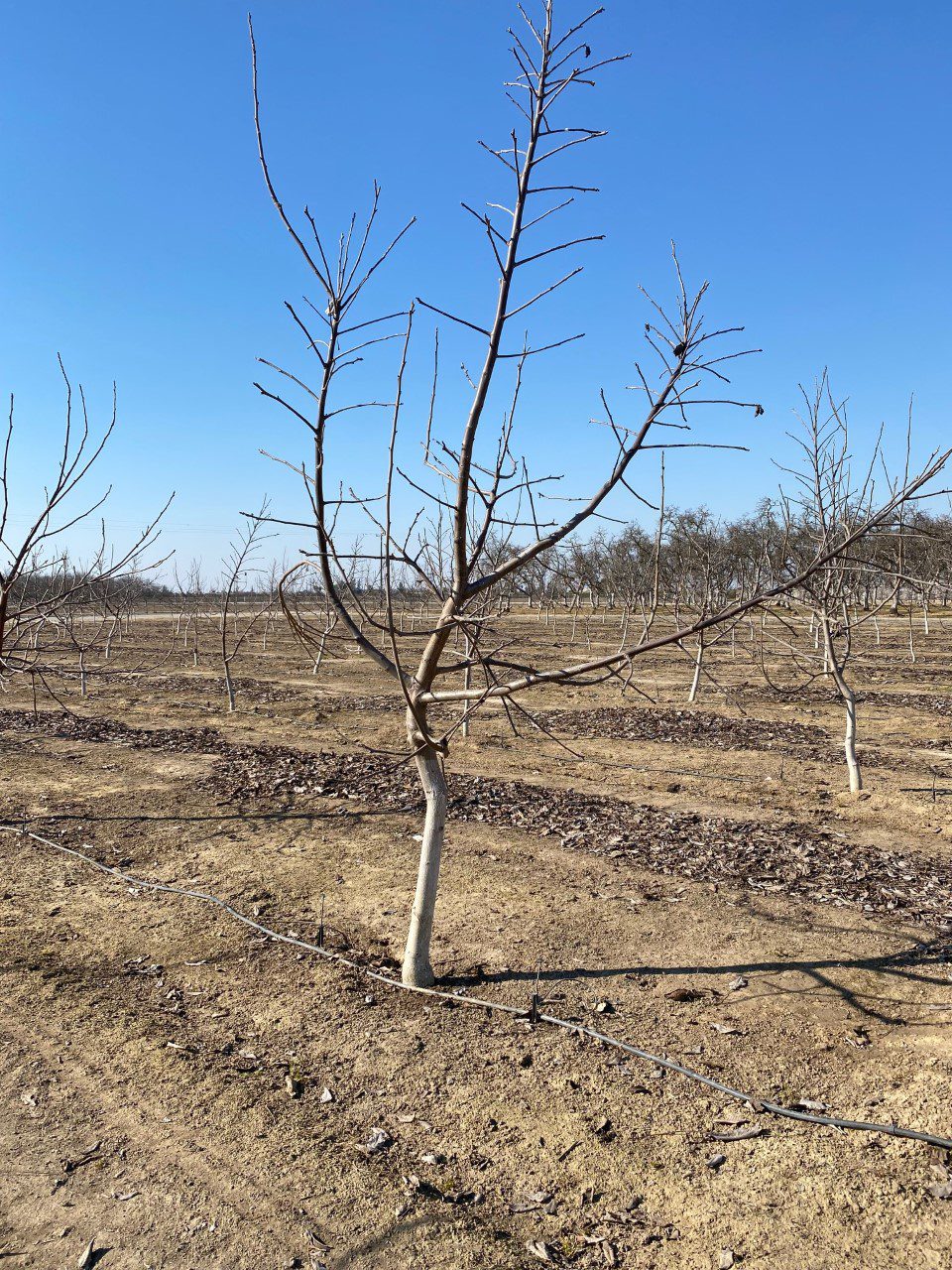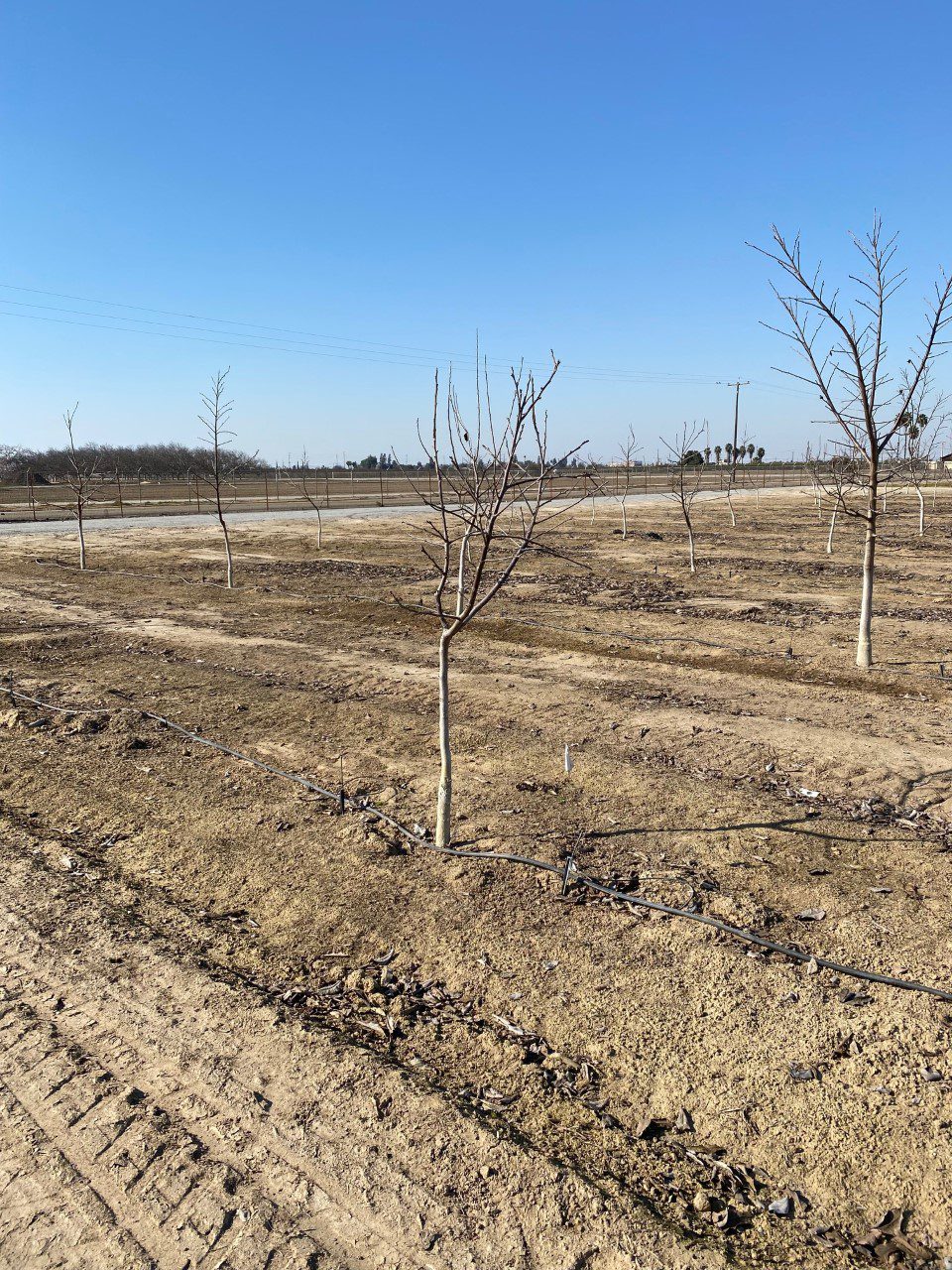
When a new walnut orchard is planned, pre-plant soil treatment decisions and rootstock choices can provide protection for new trees from infestation of plant parasitic nematodes.
Young walnut trees are particularly susceptible to damage from the root-feeding root lesion nematode. In an effort to provide longer-term solutions to mitigate nematode damage, Andreas Westphal, UCCE nematology specialist, along with UCCE Advisors Katherine Jarvis Shean, Elizabeth Fichtner and Mohammad Nouri, are investigating pre- and post-plant remedies.
The multi-year project is testing pre-plant materials along with two non-fumigant nematicides and a high-volume biocide in walnut orchards in Yolo, Tulare and San Joaquin counties.
When plant parasitic nematodes have been present in non-fumigated soils or have resurged after pre-plant fumigation, post-plant remedies are urgently needed, Westphal said. The aim of the research is to find a material that is highly effective against nematodes but has no phytotoxic effects on the trees. The expression “the concentration makes the poison” frequently holds true for post-plant applications, he added. Strategy development for beneficial nematode suppression needs to consider that concentrations of the material need to be high enough in the root zone to reduce nematode numbers, but need to be low enough to not damage the tree.

Westphal explained that post-plant nematicide applications are typically made at root flush. Parasitic nematodes need a live plant to go through their life cycle. Root growth is critical for tree health and vigor, but the flush also provides more feeding sites, which can result in steep increases of nematode numbers.
Post-plant applications are delivered via a spray application or are soil-applied. In a spray application, the material must be translocated within the plant to the active infection sites in the roots. In soil applications, the impediments of the complex soil matrix need to be overcome for the water-applied material to be effective.
Westphal said if a post-plant treatment is effective, the result would not be immediate, but would take two to three years to see.
In the overall research project, Westphal said that results of pre-plant soil treatments have been more reproducible. Post-plant applications varied among trials despite the sometimes-positive effects. Mid-term, it is expected that more complex nematode management systems need to be implemented. Westphal said the combination of pre-plant soil treatments with post-plant applications patterns has the potential to keep root lesion nematode damage at bay.
In the long-term, Westphal said rootstocks with tolerance and resistance to root lesion nematode hold promise to improve nematode management programs.

Cecilia Parsons
Cecilia Parsons has spent the past 30 years covering agriculture in California for a variety of newspapers, magazines and organizations. During that time she has been fortunate to witness some of the important events that have shaped this diverse industry and worked hard to examine and explain these events for readers.
When Cecilia first moved to the San Joaquin Valley in 1976, her first journalism job was at a small daily newspaper where she covered “farm news.” From there she branched out to writing for a dairy magazine and a regional weekly agriculture publication.
Cecilia is part of a farming family from the rural community of Ducor where she also raises purebred sheep and is attempting to master versatility ranch horse riding.










